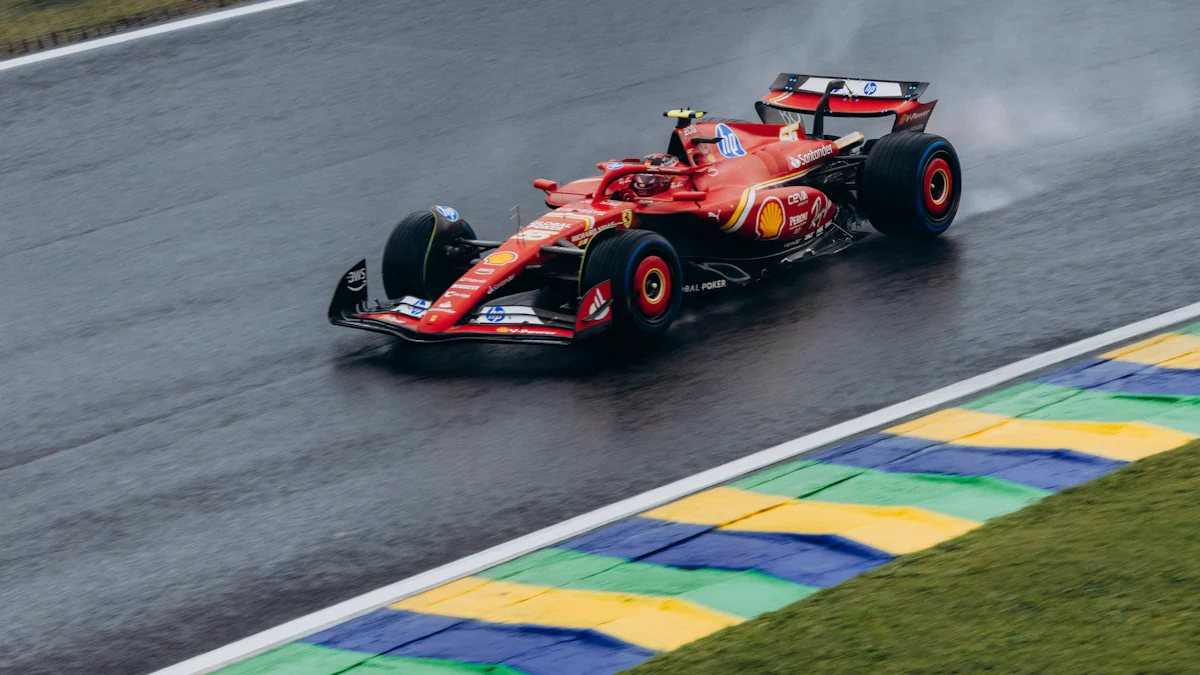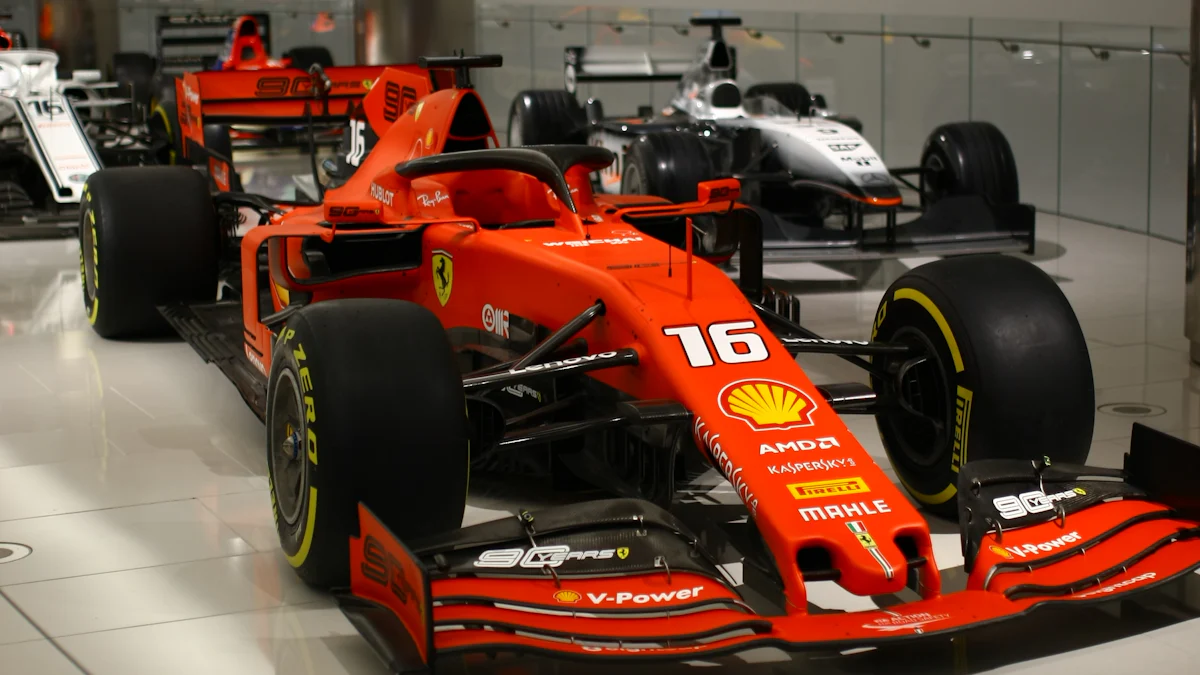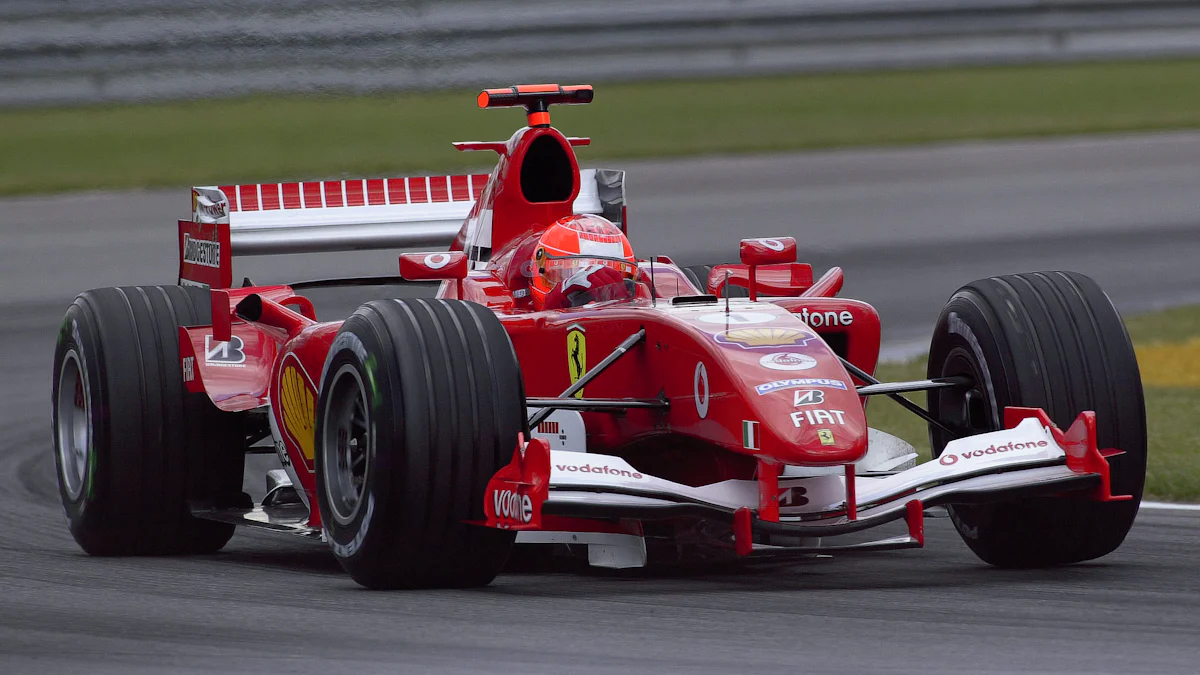Ferrari’s 2024 F1 Car Design Trends and Innovations

Ferrari has always been a symbol of excellence in Formula 1, pushing the boundaries of car design. Over the years, you’ve seen Ferrari lead in areas like aerodynamics, power unit development, and data analytics. For example, Ferrari pioneered advancements in downforce and drag reduction using wind tunnels and CFD. Its engines have consistently ranked among the most powerful, especially after 2014. These innovations have shaped the sport and set benchmarks for competitors.
In recent seasons, Ferrari’s performance has driven a fresh approach to its 2024 car. The team has adopted a new concept, focusing on smaller but impactful gains. Changes include repositioning major components within the wheelbase for better aerodynamics and improving low-speed cornering. Ferrari f1 2024 aims to balance peak downforce with stability, making the car easier for drivers to handle. This strategy reflects Ferrari’s commitment to staying competitive and innovative in a rapidly evolving sport.
Key Takeaways
Ferrari’s 2024 F1 car focuses on better airflow and less drag. It uses new sidepod shapes and underfloor designs to improve speed.
Making the car lighter is very important. Ferrari uses special materials like bare carbon fiber to cut weight but keep it safe.
Being eco-friendly matters too. Ferrari is changing its designs to follow stricter green rules and get ready for hybrid engine laws.
The 2024 engine improves old tech. It recovers more energy and uses heat better to perform well on all tracks.
Drivers need to work well with the car. Ferrari is changing the design to help drivers feel confident and perform better.
Key Trends in 2024 F1 Car Design

Aerodynamic Efficiency
Aerodynamics remains a cornerstone of Formula 1 car performance. For 2024, teams are refining their designs to maximize airflow and reduce drag. You’ll notice a focus on sidepod design, with many teams adopting downwash airflow concepts. Variations in sidepod packaging aim to channel air more effectively toward the rear of the car. Innovations in underfloor design also play a critical role, ensuring consistent downforce generation across various track conditions.
Ferrari, like other teams, is prioritizing aerodynamic efficiency. The team has repositioned mass within the wheelbase to create a more stable aerodynamic platform. This approach mirrors successful strategies used by Red Bull, which has dominated in this area. Teams are also leveraging advanced tools like Computational Fluid Dynamics (CFD) and wind tunnel testing. These methods allow rapid testing and refinement of aerodynamic packages, ensuring optimal performance on race day.
Weight Reduction and Material Innovation
Weight reduction is another key trend shaping 2024 F1 cars. Teams are exploring innovative materials to enhance performance without compromising safety. For instance, many cars now feature less paint, exposing naked carbon fiber to save weight. This trend reflects the sport’s relentless pursuit of efficiency.
Some teams are even experimenting with graphene, a material known for its strength and lightness. However, its adoption faces challenges due to high costs and strict regulations. Ferrari’s engineers are likely balancing these innovations with practical considerations, ensuring compliance with F1’s stringent rules.
Power Unit Enhancements
The 2024 season sees limited changes to power units due to the ongoing engine freeze. Current power units rely on turbocharged 1.6L V6 engines paired with energy recovery systems. While significant advancements are restricted, teams are laying the groundwork for future innovations. By 2026, F1 plans to introduce fully sustainable fuels and updated turbo-hybrid systems.
Ferrari’s power unit development reflects this transitional phase. The team continues to optimize its existing engine while preparing for upcoming regulatory shifts. This strategy ensures Ferrari remains competitive in the evolving landscape of Formula 1.
Sustainability and Regulation Compliance
Sustainability has become a central focus in Formula 1, and the 2024 season reflects this shift. You’ll notice that teams are adapting their car designs to meet stricter environmental standards. These changes align with F1’s long-term goal of achieving net-zero carbon emissions by 2030. One of the most significant upcoming regulations is the introduction of hybrid engines using 100% sustainable fuel by 2026. Although this rule is a few years away, it already influences the design trends you see today. Teams are preparing for this transition by refining their hybrid power units and exploring sustainable materials.
Ferrari’s 2024 car design showcases its commitment to sustainability and compliance with these evolving regulations. The team has prioritized the use of sustainable materials in its construction. This approach reduces the car’s environmental impact without compromising performance. Ferrari has also focused on optimizing its hybrid power unit. These innovations not only align with F1’s sustainability goals but also position Ferrari as a leader in environmentally conscious engineering.
Regulation changes introduced in 2022 have provided Ferrari with opportunities to innovate further. For example, the team has adapted its aerodynamic and structural designs to meet new technical requirements. These adjustments ensure compliance while enhancing performance. By staying ahead of regulatory shifts, Ferrari demonstrates its ability to balance sustainability with competitiveness.
As a fan, you can appreciate how these efforts contribute to the sport’s broader mission. Ferrari’s approach reflects a deep understanding of the importance of sustainability in modern motorsport. It’s not just about winning races; it’s about shaping the future of automotive technology.
Ferrari F1 2024 Innovations

Aerodynamic Updates
Ferrari has introduced several aerodynamic updates to its 2024 car, aiming to enhance airflow and downforce. These updates include a new sidepod and aileron configuration with a tapered design. This adjustment improves airflow to the rear, boosting overall stability. The team has also revised the floor design to increase downforce while addressing bouncing issues. Additionally, Ferrari has developed a new front wing featuring flexible central flaps. This innovation enhances performance in fast corners, giving you better control on high-speed circuits.
Update Type | Description |
|---|---|
Sidepods and Ailerons | New configuration with tapered design to improve airflow to the rear end. |
Floor Upgrade | Revised floor design for increased downforce without bouncing issues. |
Front Wings | New design with flexible central flaps for better performance in fast corners. |
These updates align with broader F1 trends, where teams adopt hybrid designs inspired by competitors like Red Bull. Ferrari’s approach combines these strategies with its unique innovations, ensuring the ferrari sf-24 remains competitive across various track conditions.
Chassis and Suspension Improvements
Ferrari has made significant improvements to its chassis and suspension systems for 2024. The team continues to use a unique suspension configuration, with a pushrod at the front and a pullrod at the rear. This setup differs from rivals who favor pushrod rear suspensions. Ferrari has also added more anti-dive in the front and anti-squat in the rear. These changes enhance the car’s performance during braking and acceleration.
Maintains pushrod front and pullrod rear suspension configuration.
Adds anti-dive in the front and anti-squat in the rear for better handling.
Adjusts rear suspension with a new inboard location inside the gearbox.
These innovations improve the car’s balance and stability, especially on circuits with tight corners. However, Ferrari faces challenges in ensuring these updates deliver consistent performance across all tracks.
Underfloor and Diffuser Enhancements
Ferrari has focused on refining the underfloor and diffuser of its 2024 car. The team introduced a revised floor design at Monza, which significantly improved downforce. This update also eliminated the bouncing issues that plagued previous designs. Ferrari has made additional changes to the rear of the floor, further enhancing aerodynamic efficiency.
Introduced a revised floor design at Monza to improve downforce.
Eliminated bouncing issues with updated floor geometry.
Enhanced the rear of the floor as part of the Monza package.
These enhancements ensure the ferrari f1 2024 car performs exceptionally well on low-speed circuits like Monaco. However, the car may face challenges on high-speed tracks due to aerodynamic control limitations. By addressing these issues, Ferrari aims to maintain its competitive edge in the 2024 season.
Power Unit Developments
Ferrari’s 2024 power unit represents a blend of refinement and adaptation. While the engine freeze limits major changes, Ferrari has focused on optimizing its existing turbo-hybrid system. This approach ensures the car remains competitive while preparing for future regulations. Engineers have worked on improving energy recovery systems and enhancing thermal efficiency. These updates aim to maximize power output without increasing fuel consumption.
You’ll notice that Ferrari’s power unit excels on circuits with tight corners and low-speed sections. Tracks like Monaco highlight its strengths in drivability and acceleration. However, the engine struggles with top-end performance on long straights. This creates a noticeable gap when competing against teams like Red Bull and Mercedes on high-speed circuits. Ferrari’s power unit delivers a specific performance profile, excelling in some areas while facing challenges in others.
To address these challenges, Ferrari has introduced subtle innovations. The team has refined the combustion process to extract more energy from the fuel. Additionally, engineers have optimized the hybrid system to deliver smoother power deployment. These changes improve the car’s balance and make it easier for drivers to manage during races.
Ferrari’s focus on innovation ensures the power unit aligns with the team’s broader goals for 2024. By enhancing efficiency and reliability, Ferrari aims to close the performance gap with its rivals. These efforts reflect the team’s commitment to staying competitive in a sport where every detail matters.
Ferrari’s power unit development showcases the importance of adapting to evolving challenges. It’s not just about raw power; it’s about creating a system that performs consistently across different tracks.
Comparing Ferrari’s Approach to Competitors
Red Bull’s Dominance in Aerodynamics
Red Bull continues to set the benchmark in aerodynamics. Their cars excel in consistency and reliability, giving them a clear edge on most circuits. You’ve likely noticed how their sidepod and underfloor designs maximize airflow efficiency. Ferrari, however, is closing the gap. Pre-season testing for 2024 shows Ferrari’s long-run pace and tire management have improved significantly.
Ferrari’s strategy blends Red Bull’s proven solutions with their own unique innovations. For example, Ferrari’s revamped SF-24 car emphasizes aerodynamic work, marking a departure from previous designs. This hybrid approach reflects Ferrari’s determination to challenge Red Bull’s dominance.
Ferrari’s ‘completely revamped’ 2024 Formula 1 car emphasizes its aerodynamic work, marking a big departure from previous designs and positioning it as a title contender, contrasting with Red Bull’s established technical trends.
Mercedes’ Focus on Chassis and Power Unit
Mercedes has taken a different path with the mercedes w15. Their focus lies in chassis refinement and power unit optimization. You’ll see how their pushrod rear suspension enhances aerodynamic performance. This design choice aligns with their broader strategy of balancing mechanical and aerodynamic efficiency.
Ferrari, on the other hand, has opted for a pullrod rear suspension. This unique approach prioritizes mechanical design over aerodynamic benefits. While this decision sets Ferrari apart, it also carries risks. If executed effectively, it could give Ferrari a strategic advantage. However, it may also hinder their performance compared to rivals like Mercedes.
Midfield Teams and Emerging Threats
Midfield teams are becoming increasingly competitive. McLaren, Alpine, and Aston Martin have shown potential during pre-season testing. These teams could pose a serious threat to Ferrari in 2024. McLaren’s recent upgrades have improved their pace, while Aston Martin’s consistent performance makes them a wildcard. Alpine’s focus on reliability and race strategy also positions them as a strong contender.
Ferrari must stay vigilant. While their innovations place them among the top teams, the midfield pack is closing in. You’ll see how these emerging threats could disrupt Ferrari’s plans if they fail to maintain consistency throughout the season.
Potential Impact on Ferrari’s 2024 Performance
Closing the Gap to Red Bull
Ferrari has made noticeable progress in reducing the performance gap to Red Bull. In 2023, the team trailed by 1.1 seconds per lap. For 2024, this gap has shrunk to around four to six-tenths. However, you’ll see that Ferrari still needs to improve in key areas like aerodynamics to truly challenge Red Bull’s dominance. The SF-24 car incorporates advanced aerodynamic updates, but Red Bull’s expertise in airflow management remains unmatched. Ferrari’s focus on refining its underfloor and diffuser designs could help bridge this gap further.
To compete effectively, Ferrari must also address its performance on high-speed circuits. Red Bull’s cars excel in straight-line speed, while Ferrari’s power unit struggles to match their top-end performance. By enhancing energy recovery systems and optimizing fuel efficiency, Ferrari aims to close this critical gap. These efforts reflect the team’s determination to reclaim its position at the top of Formula 1.
Strengthening Reliability and Consistency
Reliability and consistency are essential for Ferrari’s success in 2024. The team has adopted a comprehensive approach to improve mechanical setup and aerodynamic efficiency. This strategy ensures the car performs reliably across different track conditions.
Ferrari Team Principal Fred Vasseur stated: “This year, we must start off where we left off at the end of last season, when we were consistent front runners, with a view to constantly improving in all areas.”
Driver Charles Leclerc added: “I expect the car to be a step forward in several areas and from the impression I formed in the simulator I think we’re where we want to be. This season the aim is to be front runners all the time.”
Ferrari’s focus on reliability extends to its power unit. Engineers have worked on improving thermal efficiency and energy recovery systems. These updates aim to minimize mechanical failures and ensure consistent performance throughout the season.
Driver Synergy with the New Car
The success of Ferrari’s 2024 campaign also depends on how well its drivers adapt to the new car. Charles Leclerc and Carlos Sainz bring valuable experience and skill to the team. Leclerc’s contract extension provides stability, while Sainz’s future remains uncertain. This dynamic could influence team performance.
The SF-24 car features a design that is 95% different from its predecessor. These changes aim to make the car easier to drive, enhancing driver confidence. You’ll notice that Ferrari’s power unit excels in low-speed corners, giving drivers an edge on tracks like Monaco. However, challenges remain on high-speed circuits due to aerodynamic limitations.
Ferrari’s ability to foster synergy between its drivers and the new car will play a crucial role in its championship prospects. By addressing these challenges, the team can maximize its potential in the 2024 season.
Ferrari’s 2024 F1 car reflects a bold redesign aimed at regaining its competitive edge. You’ll notice how the SF-24 blends Red Bull-inspired elements with Ferrari’s unique innovations, focusing on flexible aerodynamics and improved manageability. The team has transformed every aspect of the car, addressing past weaknesses while maintaining its distinct identity.
The pullrod rear suspension highlights Ferrari’s confidence in its technical approach.
Pre-season testing showcased strong pace, with Charles Leclerc setting the fastest lap.
Improved tire management and long-run performance suggest Ferrari can challenge Red Bull and Mercedes.
With these advancements, Ferrari positions itself as a serious contender for the 2024 championship.
FAQ
What makes Ferrari’s 2024 F1 car different from its predecessor?
Ferrari’s 2024 car features a 95% redesign. Updates include a new aerodynamic package, improved suspension geometry, and a refined power unit. These changes aim to enhance cornering stability, reduce bouncing, and improve overall drivability.
How does Ferrari’s pullrod rear suspension benefit performance?
The pullrod rear suspension improves mechanical grip and lowers the car’s center of gravity. This setup enhances handling during acceleration and braking, especially on tight circuits. It also complements Ferrari’s unique aerodynamic strategy.
Why does Ferrari struggle on high-speed circuits?
Ferrari’s power unit lacks top-end performance compared to Red Bull. While it excels in low-speed corners, aerodynamic limitations reduce straight-line speed. Engineers are working on energy recovery and fuel efficiency to address this gap.
How is Ferrari addressing sustainability in its 2024 car?
Ferrari uses sustainable materials and optimizes its hybrid power unit to align with F1’s net-zero carbon goals. These efforts reduce environmental impact while maintaining competitive performance.
Can Ferrari challenge Red Bull for the championship in 2024?
Ferrari has closed the performance gap with Red Bull, improving aerodynamics and reliability. However, Red Bull’s expertise in airflow management still gives them an edge. Ferrari’s success depends on consistent performance and strategic execution throughout the season.
